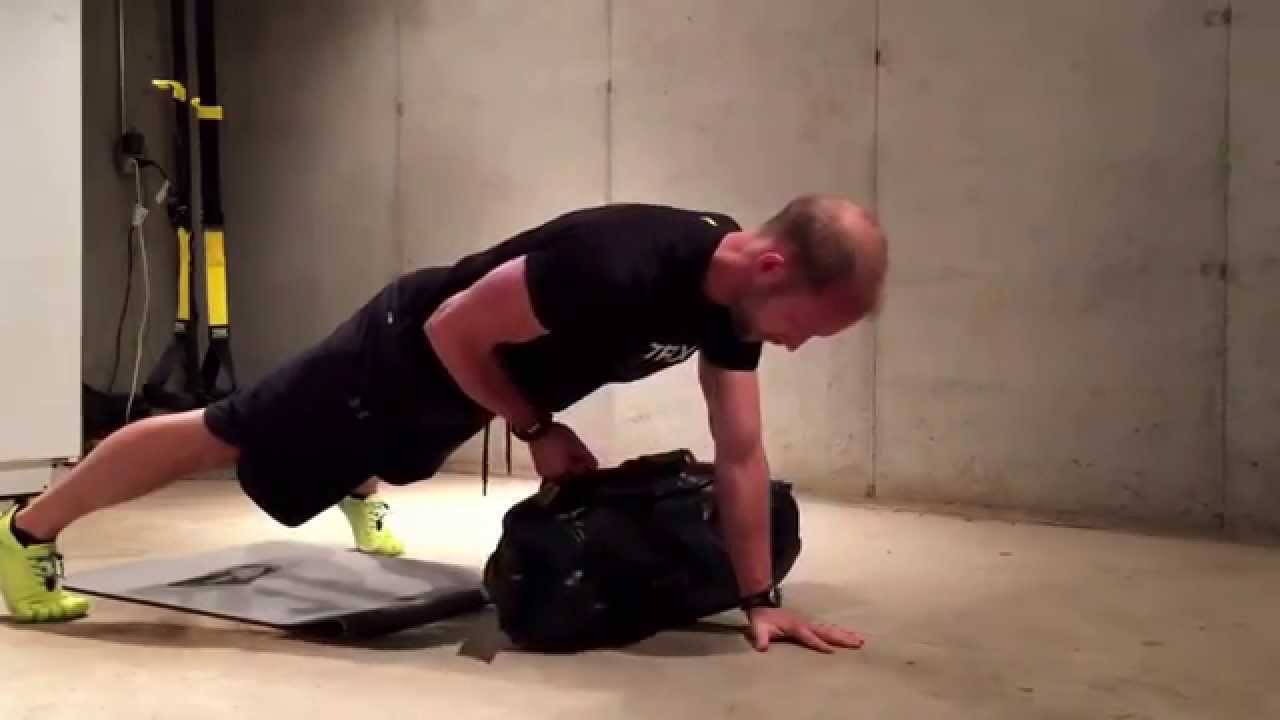Arm strength is a prereq for almost every major sport out there, from baseball to MMA to football. Coach and human performance expert Nick Tumminello relies on what he calls his “big four” to give his professional athletes arms that would make Popeye himself sit up and take notice. The big four consists of the TRX Biceps Curl at two different angles (more on this below), TRX Triceps Extension and TRX Triceps Press.
We all know strong, toned arms are nice to look at, but there’s more to arm training than meets the eye. Performing isolation exercises like the ones in this video will also help you to improve sport specific performance and rehab injuries.
Improved Performance
Many sports coaches don't think specific arm training protocols are very functional or have much carryover to sports performance, but Nick disagrees. “Ever try to run fast or jump high with a strained or torn biceps?” asks Nick. “You can't, because the biceps play a functional role in both of those activities.”
And simply put, specific biceps and triceps training is a must for ALL grappling and combat athletes. Everything from pulling a submission to attempting a take down to throwing a hook punch heavily involves the biceps and triceps and therefore demands those muscles to be strong.
Injury Rehab
Your biceps and triceps help to control your shoulder and elbow joints. Any physical therapist worth his paycheck would say that a successful rehab program starts by building motor control in a muscle. How? By isolating it. “Once you've taught your biceps or triceps how to work, they'll eventually ‘wake up’ and learn to work even better to support your joints and work even harder on major compound exercises and integrated activities,” says Nick.
It's All About Angles
In the video, Nick gives us a quick lesson in biomechanics that will help you save time and get much more out of your TRX biceps and triceps training. During any style of biceps curl, the point at which your biceps is being maximally loaded (stimulated) is the point in the range of motion in which your forearm is at a 90 degree angle with the “load vector.” If you're using free weights, gravity is your load vector. So the point of maximal loading would be when your elbow reaches 90 degrees of flexion or when your forearm is parallel to the floor. If you're doing biceps curls using a TRX, the TRX strap is the load vector. Here, the point of maximal loading to your biceps is when your forearm makes a 90 degree angle with the TRX strap.
Different exercises will create a maximal force angle at different points in the range of motion, as Nick illustrates in the video. The nice thing about arm training using the TRX is that you can quickly and easily change up the load vector to create a different training stimulus. And new training stimulus means new muscle!
When performing this arm workout, keep the following guidelines in mind:
- Perform all four arm exercises back-to-back in the order shown.
- Perform two to four sets for eight to 12 reps of each exercise.
- Rest 30 to 60 seconds between sets.
- Perform both biceps exercises back-to-back without rest for a biceps super set.
- Perform both triceps exercises back-to-back without rest for a triceps super set.
- Perform a biceps exercise followed by a triceps exercise for a front-to-back arm super set.
Nick Tumminello is founder of Performance University (www.performanceu.net), where he delivers world-class health and performance training and education to everyone from exercise enthusiasts to professional athletes. Nick is a highly sought after coach and educator and the inventor of the Core Bar. He has produced numerous educational DVDs and is a regular contributor to popular websites like T-Nation and Strengthcoach.com.


